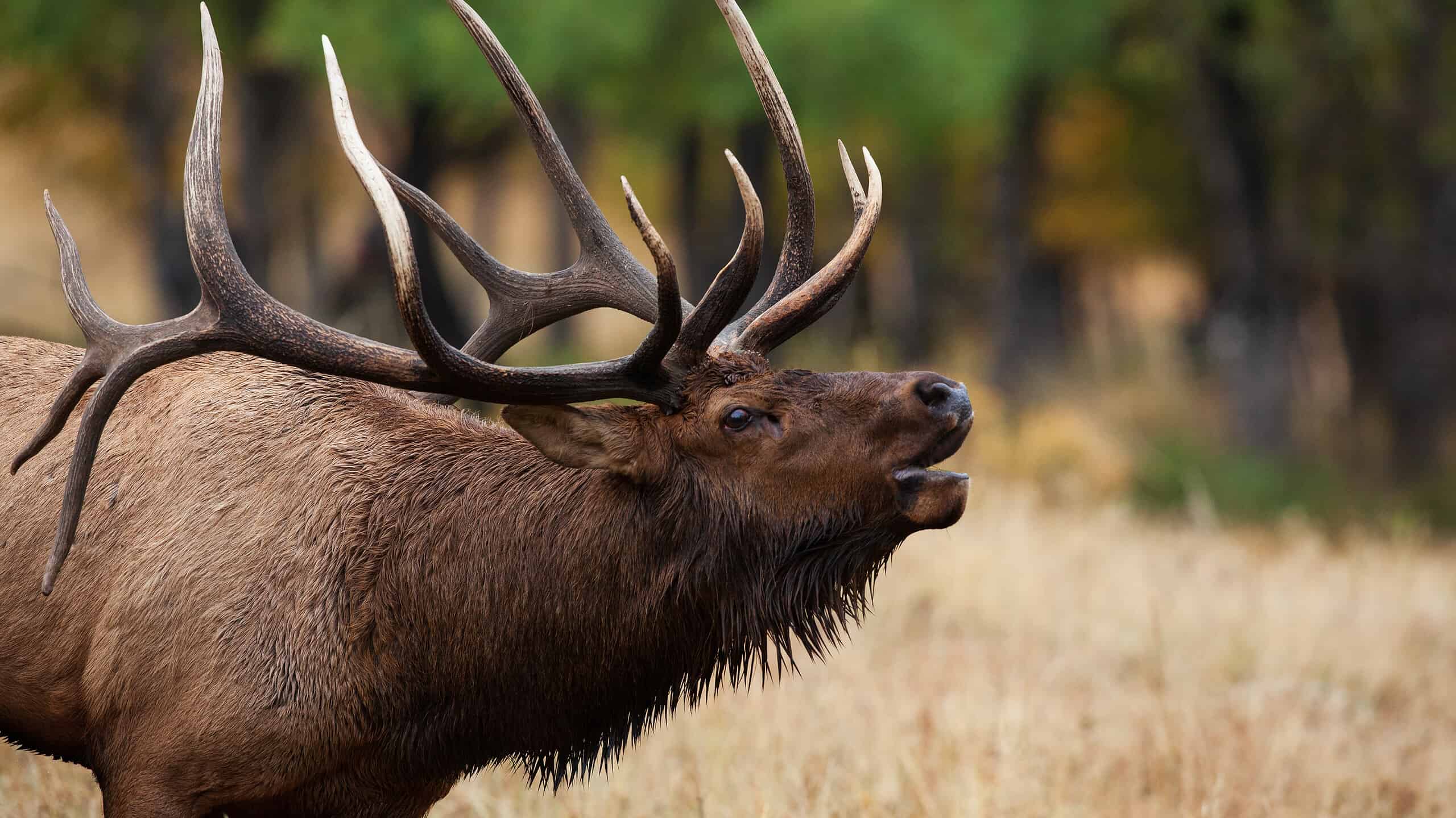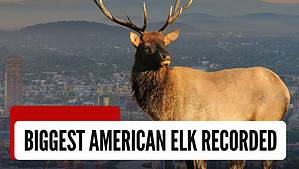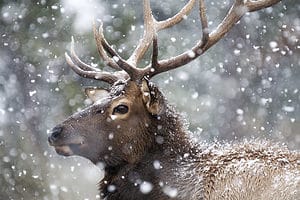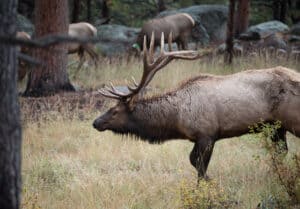Hunting is a popular activity in the United States, especially in Michigan. Although many Michigan hunters seek white-tailed deer, elk is also a popular animal for hunting. It’s important though to follow the rules and regulations set in Michigan for hunting. To legally hunt for elk in Michigan, you need a license, which is drawn. If you’re lucky and have the chance of snagging a license, you also need to purchase a base license and elk receipt. Are you curious about the largest elk ever caught in Michigan? Follow along to learn more about this impressive catch!
What is the Largest Elk Ever Caught in Michigan?
The largest elk ever caught in Michigan scored 362 6/8 in 2009. Courtney Williams held the previous record with a score of 361 7/8. Arlis Fleshman Jr. waited for over twenty years for a chance to hunt Michigan elk. Licenses are limited and aren’t guaranteed. Arlis Fleshman Jr. had help from Bob Whitney, the owner of Elk View Cabins and Guide Service of Johannesburg. In a split second, Arlis shot the state record.
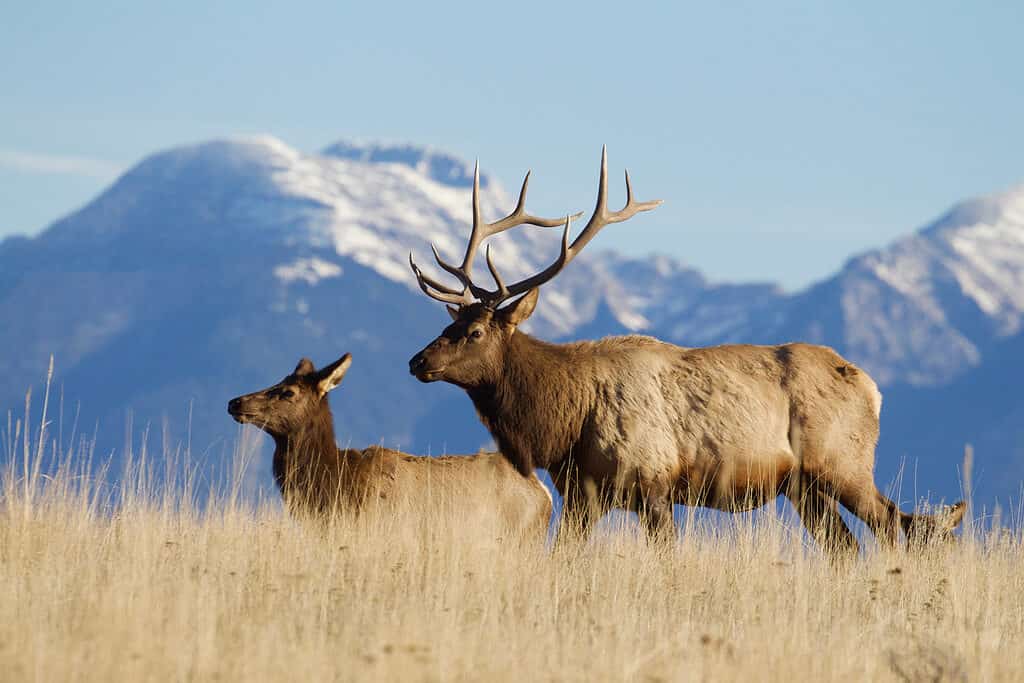
The largest American elk ever caught in Michigan measured 361 7/8 inches.
©Tom Reichner/Shutterstock.com
About Elk
Elk are large and fascinating animals in the deer family, Cervidae. There are multiple types of elk, found throughout the world. How many elk species depend on the expert you ask. Although heavily debated, there are at least six North American elk subspecies, four of which are extinct. In the Asian/eastern group, there are about 5 subspecies. However, it may be less.
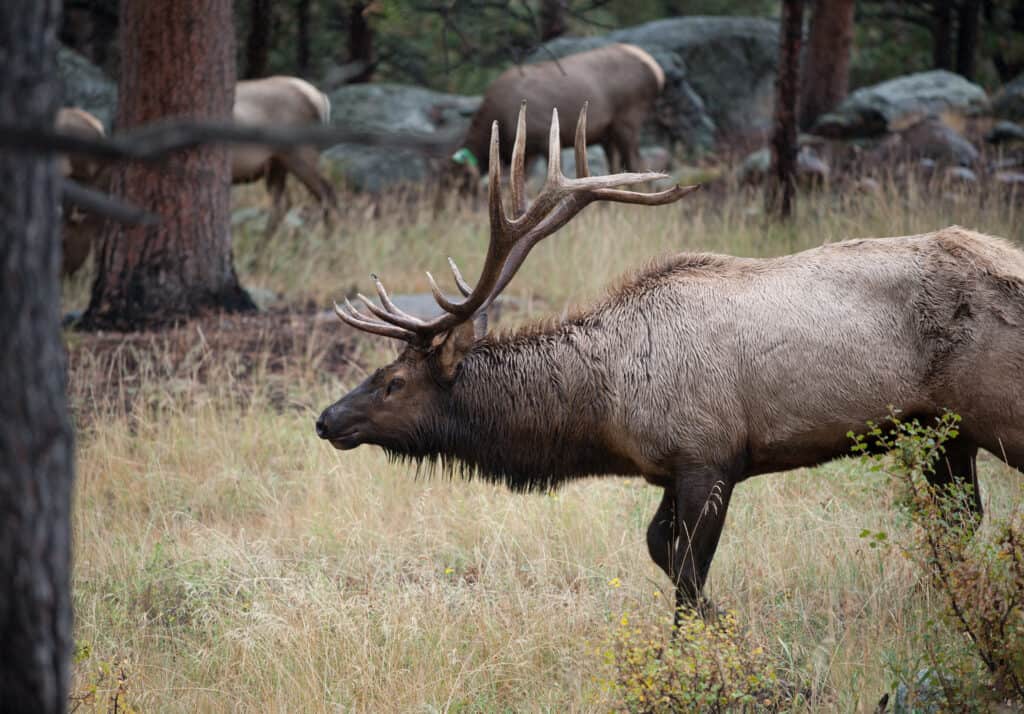
There are multiple subspecies of elk in the world.
©Tony Campbell/Shutterstock.com
Appearance and Size
Elk range in size and appearance depending on the subspecies and their range. Although true, elk are still large animals. They can weigh anywhere from 377 to 1,100 pounds. Elk are also tall, with a shoulder height of around 2 feet and 6 inches to 4 feet and 11 inches. Roosevelt elk are the largest subspecies. They can reach up to 1,300 pounds, especially the more north you go. One of the smallest subspecies in the tule elk. These elk weigh around 350 to 701 pounds. Females are also smaller than male elk.
So, what do elk look like? Elk have large, long, and slender bodies. They range in color but are usually brown, red, black, and yellow/white. Some subspecies of elk also have thicker coats of fur. Elk are especially known for their large antlers, which are made of bone. These antlers grow about 0.9 inches every day. While elk antlers grow, they develop velvet, which is a soft skin that protects them. This soft skin is shed during the summer when elk antlers stop growing. Antlers shed in winter as testosterone levels drop. Easily elk antlers weigh between 20 to 40 pounds. The Altai wapiti has the smallest antlers of the elk.
Distribution and Habitat
Elk have a long and wide range. They are native to North America, Central, and East Asia. Elk aren’t picky about their environments or habitats. You can find them in dry or flat grasslands, mountainous areas, deciduous woodlands, and boreal forests. In North America, experts estimate there are about 1 million American elk. Colorado has the most elk in the United States, with a population of at least 290,000. Elk in Michigan aren’t as common. American elk disappeared from the state by 1875 but were re-introduced around 1918. During this time, seven elk were released near Wolverine. Now, limited hunting is allowed. The elk population in this state has wavered a lot. For instance, there were 1,500 elk in the 1960s, but by 1975, only 200 remained.
Diet
Elk are very hungry animals with large diets. They can eat up to 3 pounds of food a day for every 100 pounds of body weight. Elk are foragers. While they mainly consume vegetation, they also sometimes eat bones, antlers, and eggs. The exact vegetation an elk eats depends on its environment. However, they usually consume grasses, twigs, tree bark, and more. Common plants include dandelions, elk thistle, birch twigs, and wheat grass. Baby elk though mainly drink milk from their mother and eat grass. They drink milk for 2 to 5 months and during this time slowly introduce other foods into their diet.

Elk are foragers that eat many plants, including dandelions.
©Tetiana Shumbasova/Shutterstock.com
Predators
With how large elk are, you can probably guess that they don’t have a lot of natural predators. Baby elk are the most vulnerable to predators including coyotes, bobcats, bears, and mountain lions. Although occasionally fully grown elk are attacked, it’s rare. These heavy animals are difficult to take down, unless sick or injured. They also travel in large herds and protect each other. Male elk aren’t afraid to butt heads and use their strong antlers.
Thank you for reading! Have some feedback for us? Contact the AZ Animals editorial team.

